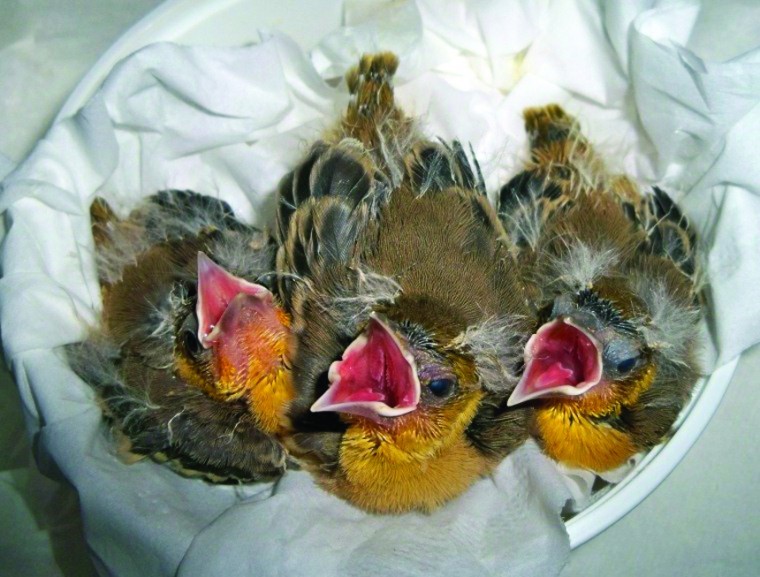
The Baltimore baseball team may have the orange and black colors of their namesake bird, the Baltimore oriole, but these baby Bullock’s orioles, which (if they’re male players) will also grow up to sport bright orange breast feathers and black caps, appear to be cheering on their own local team, the San Francisco Giants.
Actually, the two avian “clubs” are more than just similar in their colors. They were once considered to be the same species – you could say they belonged to the American League of the birding world – called the Northern oriole, before they were again separated by scientists into Baltimore and Bullock’s. Bullock’s orioles breed throughout the western and most of the midwestern United States (the Baltimore oriole breeds in most of the eastern United States; there is an overlap where the two species have hybridized). Both species migrate to Mexico for the winter. (This is relevant since the species was named after William Bullock, an English naturalist, for his ornithological work in Mexico in the early 1800s.) They all return to the United States just in time for the spring baseball season.
The trio of nestling Bullock’s orioles were orphaned in mid-July after a freak windstorm broke the tree branch holding their nest. They were brought to the Wildlife Education and Rehabilitation Center still snuggled inside their well-made and comfortable hanging nest constructed from fibers, grasses and lined with bits of soft feathers. Sporting gorgeous amber-yellow breast feathers, the hungry little birds grew up quickly on a diet of special passerine formula (that hardworking and dedicated volunteers – aka designated parents – fed them every half-hour from sun-up to sun-down) and later, on juicy mealworms and an assortment of fresh fruit and berries.
They were released for their “home run” at the end of August in woodsy parkland, where they can dine on an abundance of wild bugs such as caterpillars, grasshoppers, crickets, beetles and spiders, as well as fruit from trees. They even eat honeybees, first removing the stinger before swallowing the bee.
If you’d like to score having your very own team of orioles in your backyard, consider putting out halved oranges, suet and grape jelly for them. They also delight in drinking from hummingbird nectar feeders. Don’t forget to provide water – orioles like to visit bird baths, small fountains, leaky faucets and other sources of dripping or running water.









